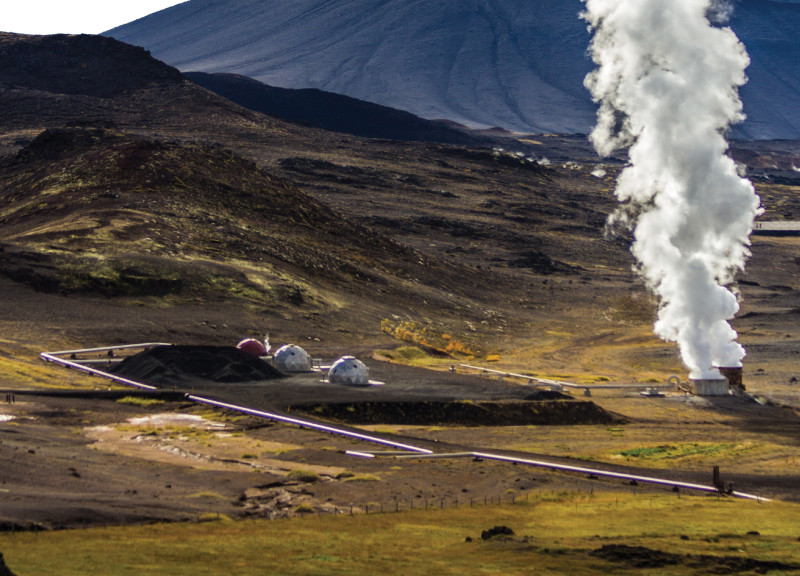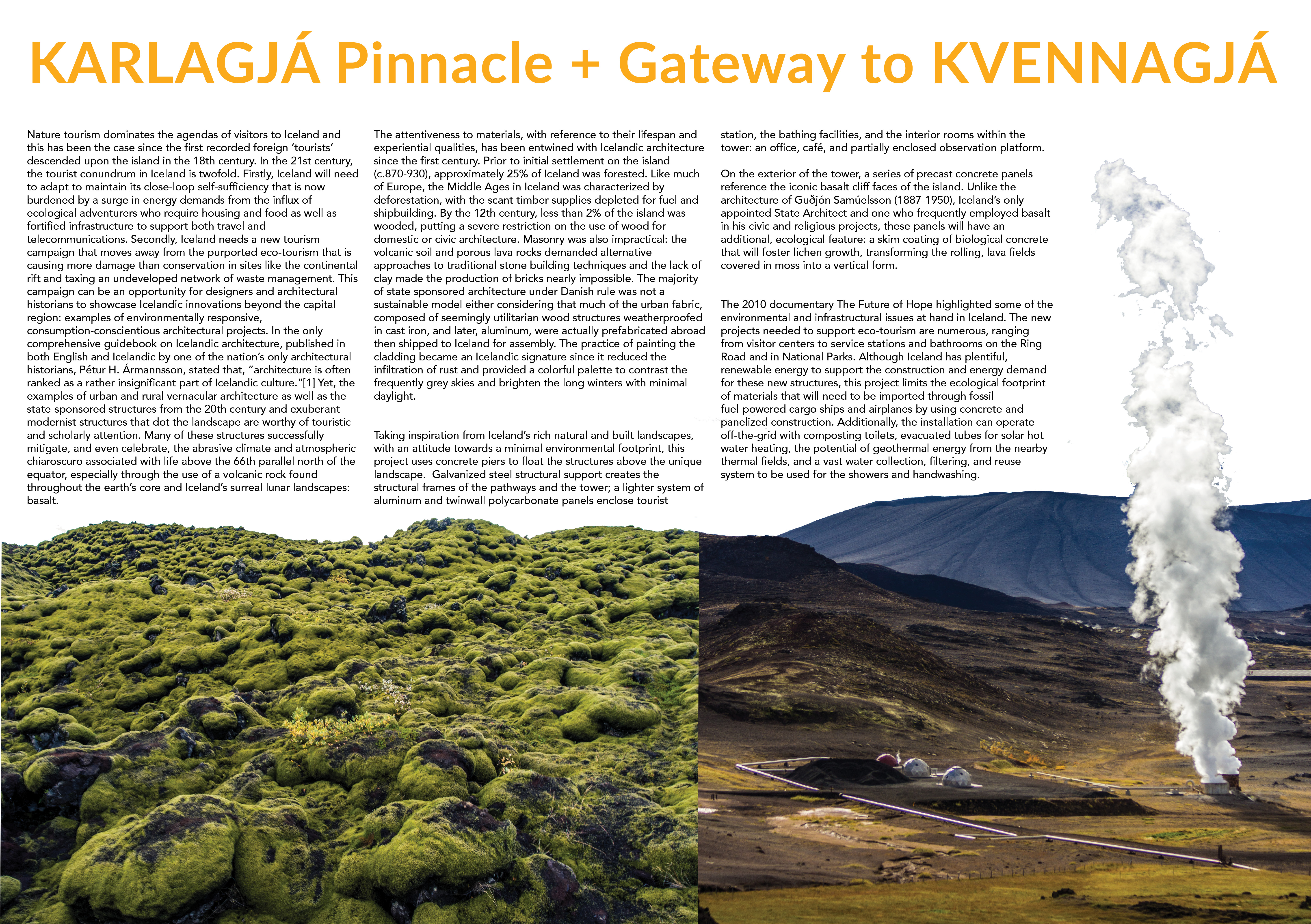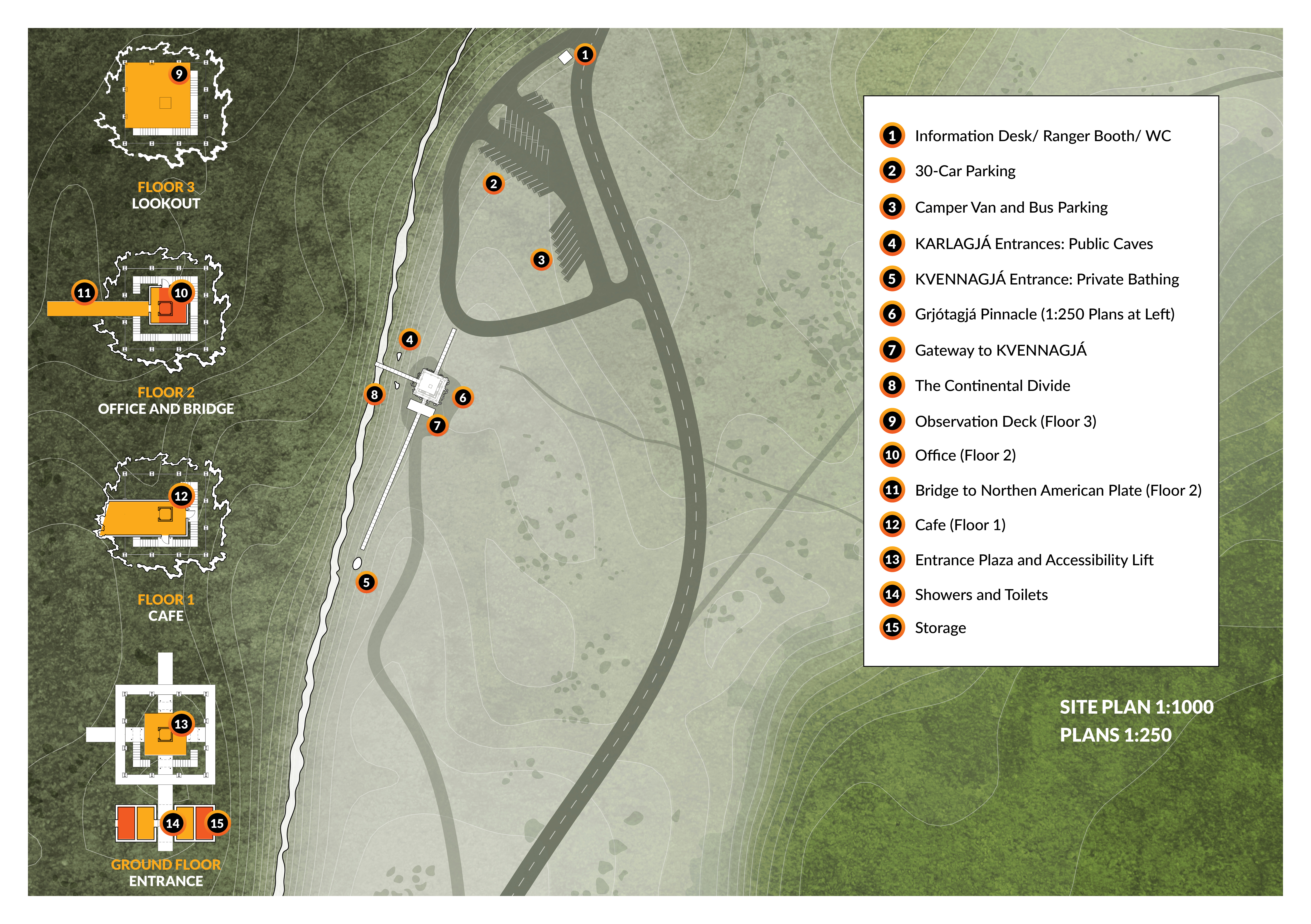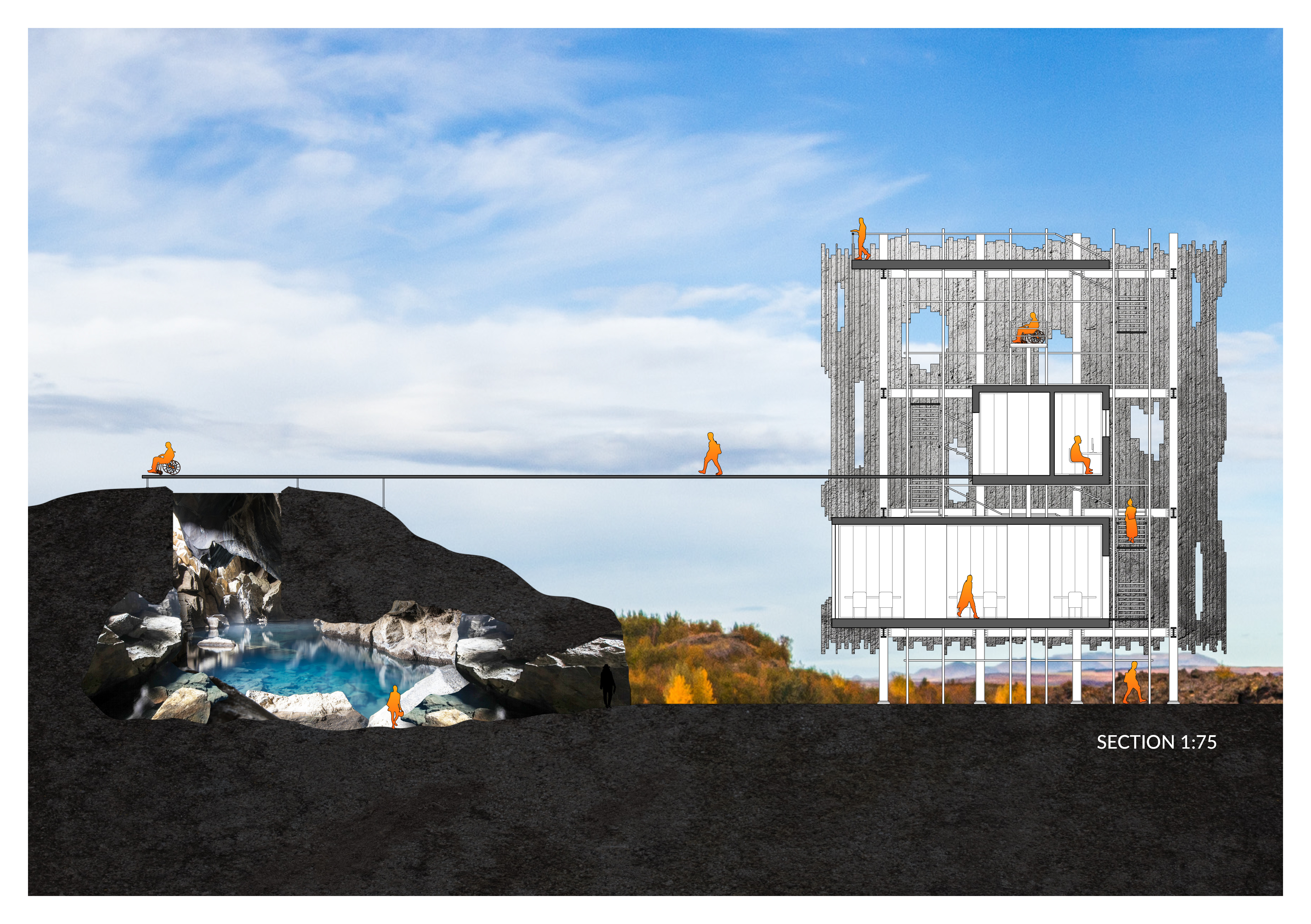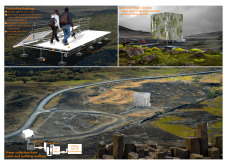5 key facts about this project
The KARLAGJÁ Pinnacle + Gateway to KVENNAGJÁ is located in a remarkable landscape in Iceland, where visitors can experience the unique features of the region. It serves as a welcoming point for tourists while emphasizing ecological principles in its design. The facility is meant to create a deeper bond between people and the natural environment of Iceland, showcasing the special geological characteristics of the area.
Design Concept
The design focuses on how the building interacts with the landscape. By raising the structure on concrete piers, the plan reduces any negative impact on the ecosystem. This elevation allows for better views of the terrain and encourages a connection with the surrounding natural elements. The architecture complements the environment rather than competing with it.
Material Selection
Precast concrete panels are a significant part of the facade. Their appearance is inspired by the local basalt cliffs, making the structure relate visually to its setting. These materials not only provide strength against Iceland's unpredictable weather but also help the building blend into its surroundings. This connection to local geological features is an important aspect of the overall aesthetic.
Ecological Integration
A notable feature is the use of biological concrete, which supports the growth of lichen on the outer surfaces. This integration promotes the idea of a living building, allowing it to evolve over time. Such an approach reflects a commitment to sustainability and biodiversity, demonstrating how the project aims to engage with the environment.
Functional Layout
The layout is designed to serve multiple purposes. Essential facilities include an information desk and a ranger booth to assist visitors. There are also spaces for private bathing, which connect to Iceland's tradition of geothermal practices. Each area has been carefully considered to enhance the visitor experience while ensuring ease of access.
The observation deck stands out as a key element, offering extensive views of the area. It invites guests to take in the landscape, highlighting the relationship between architecture and nature. This feature encourages a connection to what makes Iceland's scenery unique.


